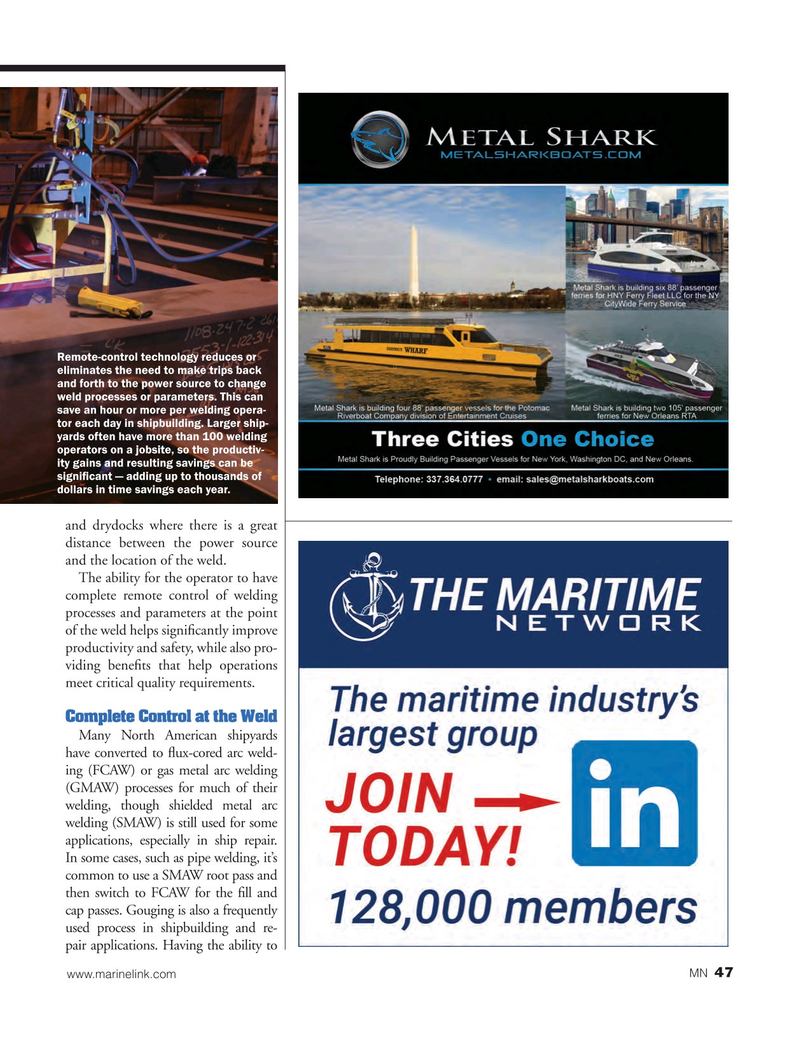
Page 47: of Marine News Magazine (April 2017)
Boatbuilding: Construction & Repair
Read this page in Pdf, Flash or Html5 edition of April 2017 Marine News Magazine
Remote-control technology reduces or eliminates the need to make trips back and forth to the power source to change weld processes or parameters. This can save an hour or more per welding opera- tor each day in shipbuilding. Larger ship- yards often have more than 100 welding operators on a jobsite, so the productiv- ity gains and resulting savings can be signi? cant — adding up to thousands of dollars in time savings each year.
and drydocks where there is a great distance between the power source and the location of the weld.
The ability for the operator to have complete remote control of welding processes and parameters at the point of the weld helps signi? cantly improve productivity and safety, while also pro- viding bene? ts that help operations meet critical quality requirements.
Complete Control at the Weld
Many North American shipyards have converted to ? ux-cored arc weld- ing (FCAW) or gas metal arc welding (GMAW) processes for much of their welding, though shielded metal arc welding (SMAW) is still used for some applications, especially in ship repair.
In some cases, such as pipe welding, it’s common to use a SMAW root pass and then switch to FCAW for the ? ll and cap passes. Gouging is also a frequently used process in shipbuilding and re- pair applications. Having the ability to 47 www.marinelink.com MN

 46
46

 48
48
